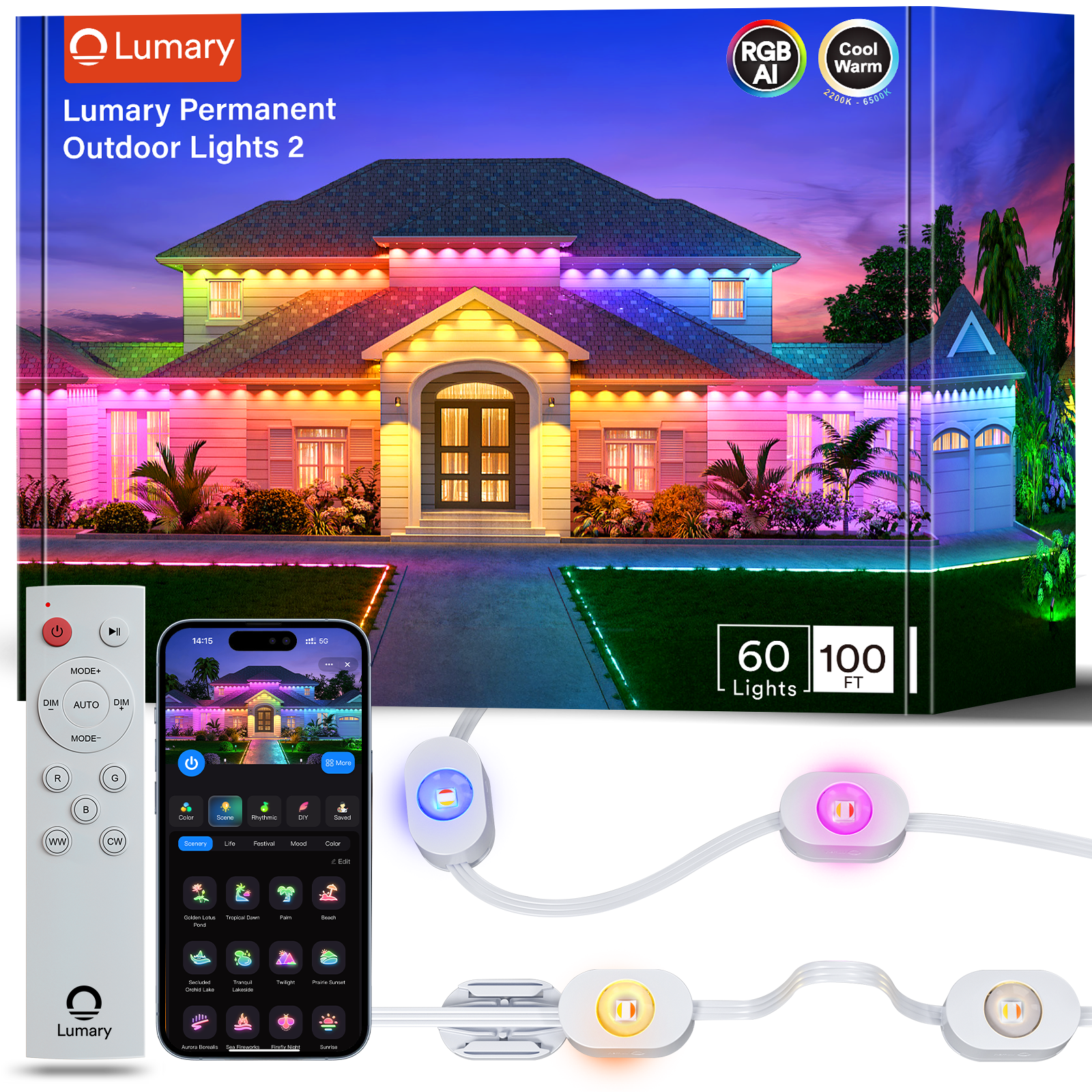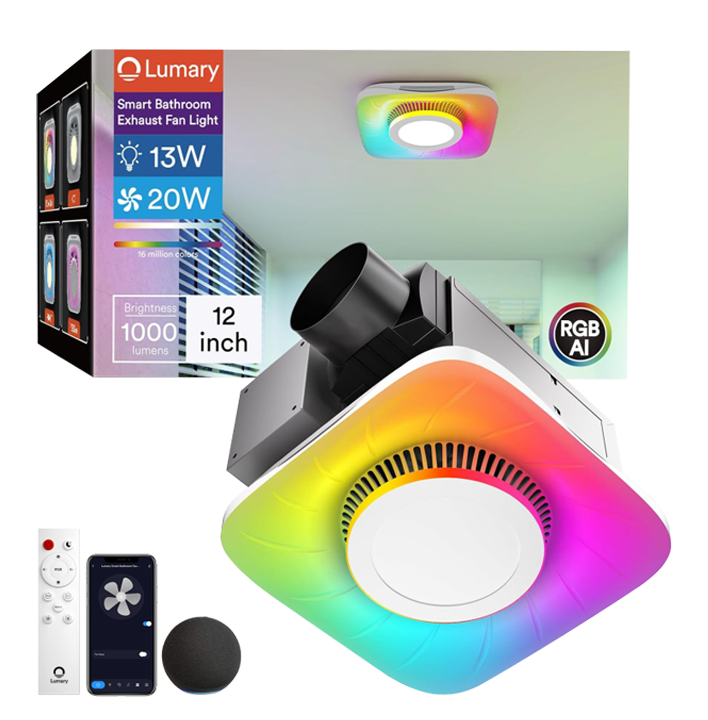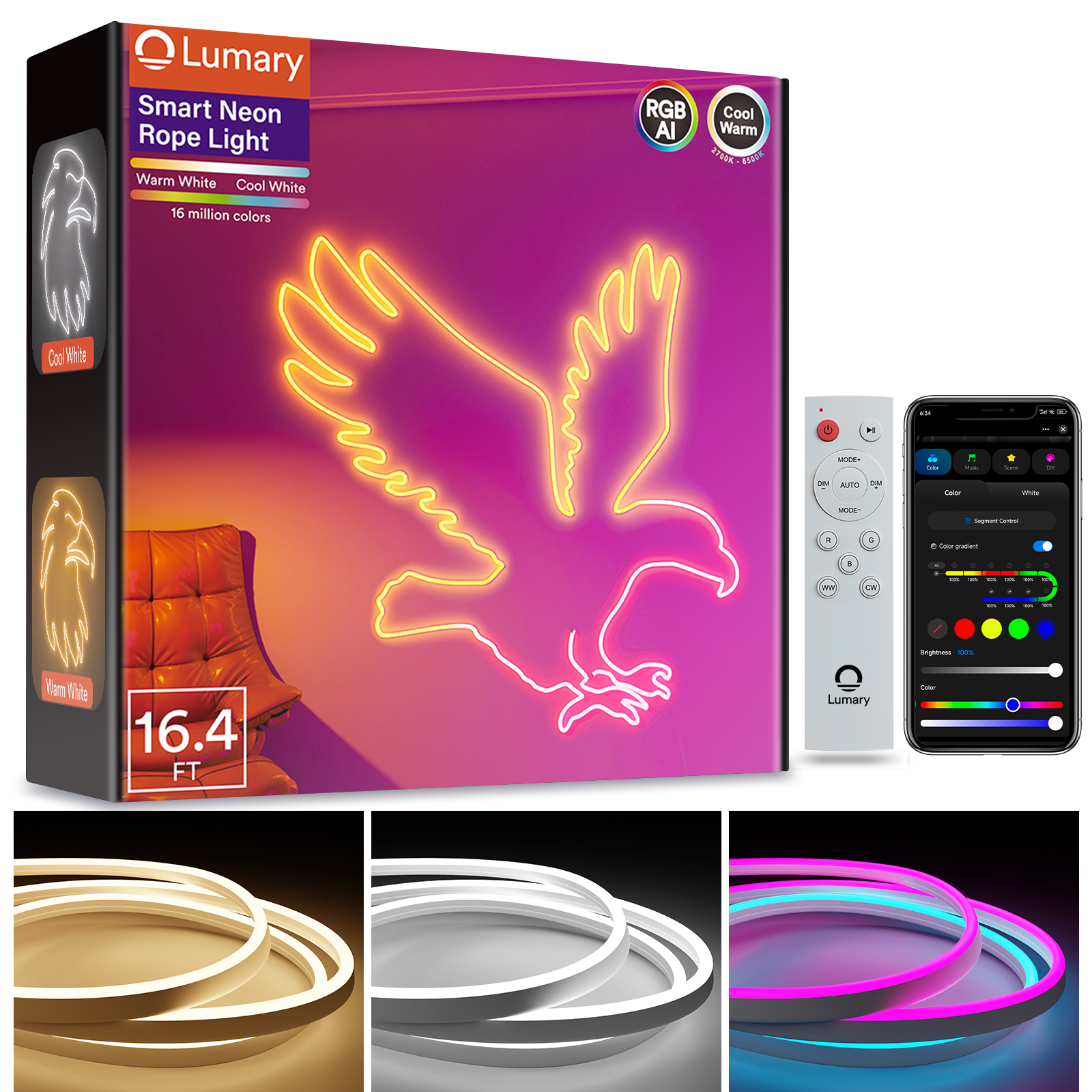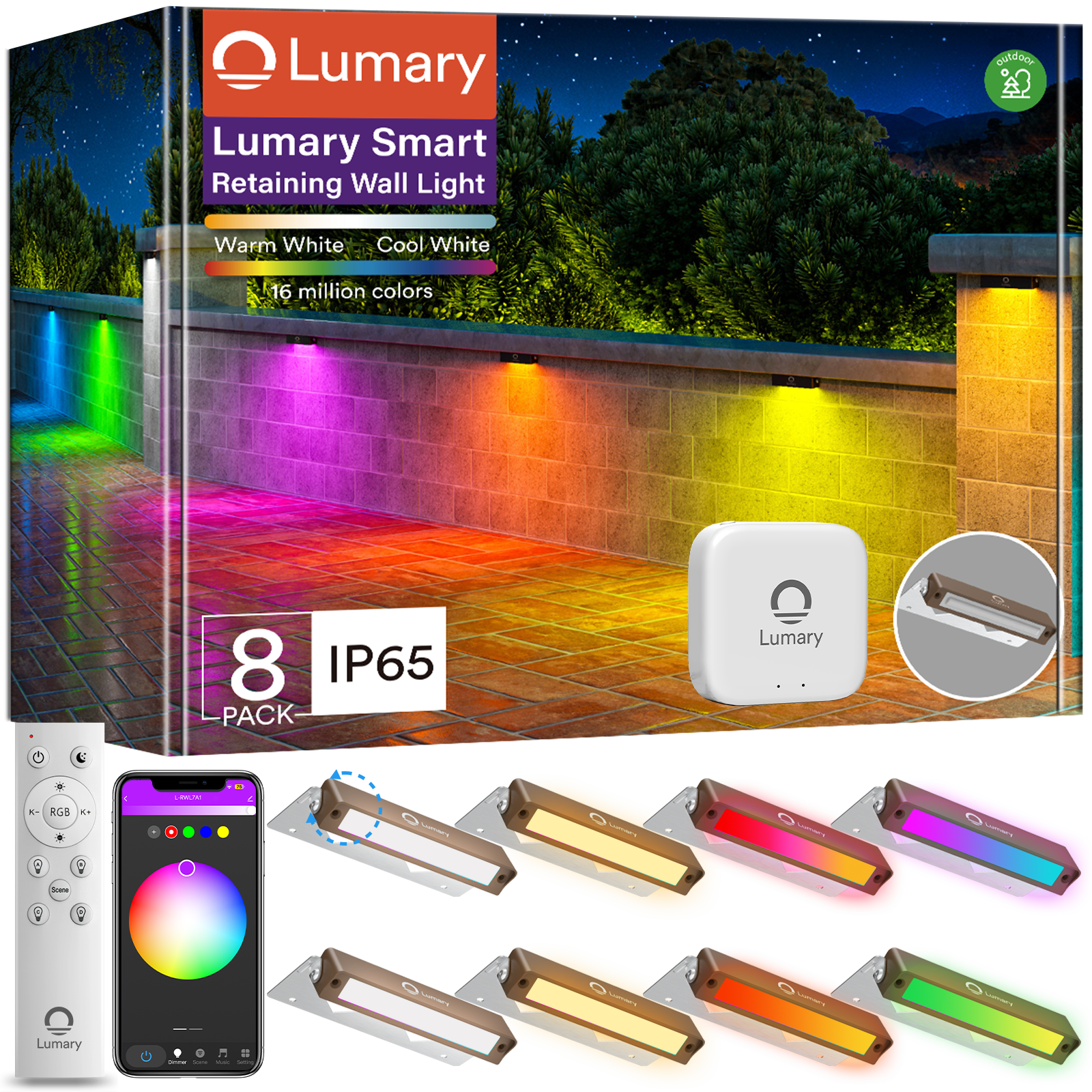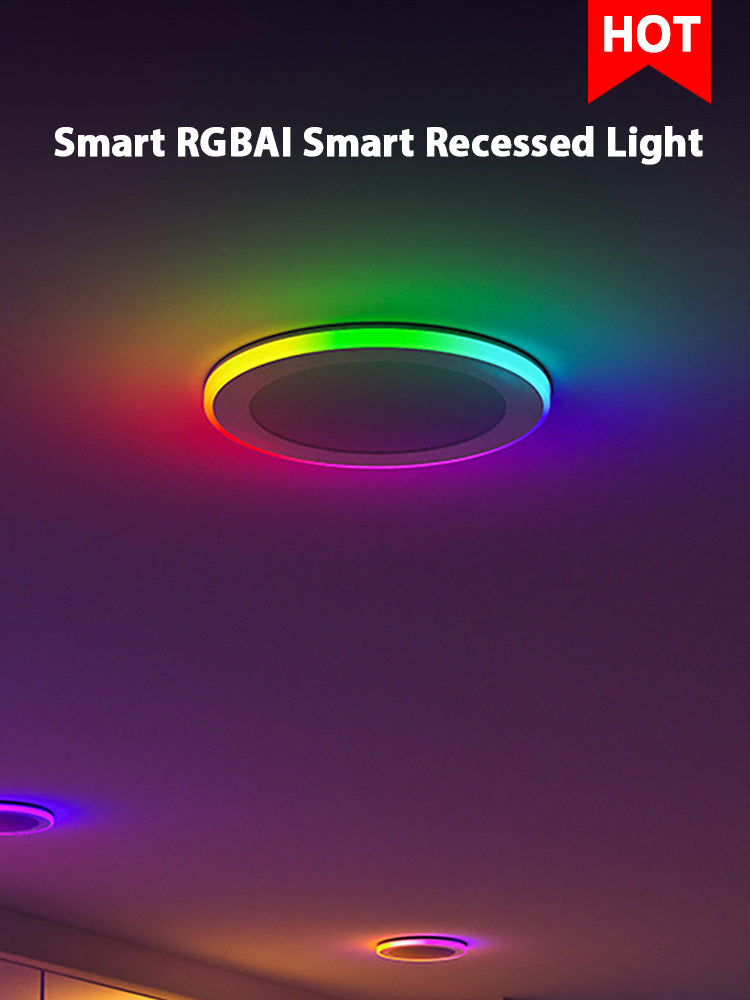Picture entering a room where lights change to match your mood. That’s the cool part of smart home lighting! It’s not just easy to use—it saves energy too. LED bulbs use 75% less energy than old ones. They also last 25 times longer. Smart lighting systems fit your daily habits. They can cut lighting costs by up to 70%. With these perks, you get a greener and cozier home.
Key Takeaways
-
Smart lights help cut energy bills by up to 70%. Use LED bulbs for less power use and longer-lasting light.
-
Automation and voice control make smart lights easy to use. Set timers or talk to adjust lights without trouble.
-
Pick smart lights that dim and sense when rooms are empty. This helps them work well with your home setup.

Benefits of Smart Home Lighting
Energy Efficiency and Savings
Smart lighting helps you save energy in surprising ways. You can turn off lights from anywhere if you forget. Some devices show how much power you're using in real-time. AI systems go further by shutting off unused appliances automatically. These tools help lower your energy bills and are better for the planet.
Convenience and Automation
Think about never needing to touch a light switch again. Smart lighting makes this possible. Lights can follow schedules to match your daily habits. You can also control them with your voice while cooking or relaxing. Here’s a simple table showing how smart lighting makes life easier:
|
Feature |
Benefit |
|---|---|
|
Programmable Schedules |
Lights turn on or off automatically, saving time and energy. |
|
Voice Control Integration |
Use voice commands to adjust lights without lifting a finger. |
|
Change brightness, colors, and warmth to fit your mood. |
|
|
Security Integration |
Lights can make it look like someone’s home to scare off intruders. |
These features make smart lighting easy to use and improve your daily life.
Personalization and Ambiance
Smart lighting isn’t just useful—it’s also fun. You can set up special lighting for movie nights or parties. Adjust the brightness and colors to create the perfect vibe. Some systems even help you sleep better with special lighting that matches your body’s natural rhythm. New ideas like lights built into furniture or ones that change with time are becoming popular. Whether you use simple smart bulbs or advanced systems, smart lighting helps make your home feel truly yours.

Choosing the Right Smart Lighting System
Ensuring Compatibility with Your Smart Home System
Before buying smart lights, check if they work with your system. Compatibility is important for smooth use. Some lights only work with certain hubs or apps. For instance, Zigbee bulbs need a Zigbee hub, but Wi-Fi bulbs connect to your router.
Make sure your smart lights can work with other devices. This lets you control lights, cameras, and thermostats in one app. If you use Alexa or Google Assistant, confirm the lights support voice commands.
Tip: Choose lights labeled “Works with [Your Smart Home System]” to avoid problems.
Key Features to Consider
Pick smart lights with features that make life easier. Here’s a list of must-haves:
-
Dimming: Change brightness to match your mood or task.
-
Occupancy or Vacancy Control: Lights turn on when you enter and off when you leave.
-
Daylight Control: Adjusts light based on how bright it is outside.
-
Task Tuning: Sets lighting for activities like reading or cooking.
-
Networking: Links multiple lights for easy control.
-
Color Tuning: Switch colors to fit your style or mood.
-
Automation and Tracking: Create schedules and track energy use.
Some systems also have motion sensors and daylight features. These tools save energy and make controlling lights easier.
|
Feature |
LoRa |
Zigbee |
NB-IoT/CAT1 |
|---|---|---|---|
|
Network Delay |
Under 1 second |
2-3 seconds |
1-5 seconds |
|
Application |
Multi-node areas |
Complex setups |
Single-point tasks |
|
Communication Type |
LAN |
WAN |
WAN |
Recommended Brands and Products
With so many choices, picking smart lights can feel tricky. Here are some top brands to consider:
-
Philips Hue: Offers many bulbs and a great app for control.
-
Wyze: Budget-friendly bulbs with color-changing options.
-
Sylvania Smart+: Works well with major smart home systems.
-
LIFX: High-quality bulbs that don’t need a hub.
-
Nanoleaf: Fun designs with modular panels for creative lighting.
People love Philips Hue for its reliability and features. Wyze and Sylvania are great for saving money, while Nanoleaf is perfect for unique designs.
Note: Think about what matters most—price, features, or compatibility—when choosing a brand.
Smart Lighting Integration: A Step-by-Step Guide
Installing Smart Bulbs and Fixtures
Starting with smart lighting is simple and fun! First, swap your regular bulbs for smart bulbs. These bulbs fit into normal sockets, so no special tools are needed. If you’re upgrading fixtures, pick ones that work with your smart home system.
Here’s an easy checklist to follow:
-
Turn off the power: Always switch off electricity before changing bulbs or fixtures.
-
Install smart bulbs: Screw them in like regular light bulbs.
-
Upgrade fixtures: Follow the instructions if adding smart fixtures.
-
Test the lights: Turn the power back on and check if they work.
Smart bulbs save energy and help the planet. For example, Los Angeles saved 63% on energy costs with connected streetlights. Imagine how much you could save at home! Plus, these bulbs lower carbon emissions, making them eco-friendly.
Connecting to Hubs and Apps
After installing your smart bulbs, connect them to your system. Most systems use hubs or apps for control. Hubs link all your devices, while apps let you manage them on your phone or tablet.
Follow these steps to connect your lights:
-
Download the app: Get the app for your smart lighting system.
-
Set up the hub: Plug in the hub and connect it to Wi-Fi.
-
Pair your lights: Use the app to add your bulbs or fixtures.
-
Test the connection: Try turning lights on or off using the app.
Pro Tip: Pick a hub that works with all your smart devices. This makes controlling lights, cameras, and thermostats easier.
Setting Up Automation and Routines
This is where the fun begins—automation and routines! Automation lets lights work on their own using schedules or triggers. Routines create special lighting scenes for activities like reading or relaxing.
Here’s how to set up automation:
-
Create schedules: Set times for lights to turn on or off in the app.
-
Add triggers: Use motion or daylight sensors for automatic control.
-
Customize routines: Adjust brightness and colors for different moods.
Automation saves energy and money. Studies show smart systems can cut heating and lighting costs by up to 23%.
|
Evidence Type |
Description |
Source Link |
|---|---|---|
|
Energy Efficiency |
Automated systems save energy and reduce costs. |
worldmetrics.org |
|
Market Projection |
Smart homes may reach $151.4 billion globally by 2028. |
worldmetrics.org |
|
Homeowner Motivation |
42% of homeowners want energy savings most. |
worldmetrics.org |
|
Cost Savings |
Smart thermostats save 10-23% on heating costs. |
gitnux.org |
Note: Test your routines after setting them up. This ensures they work well and save energy.
Advanced Tips for Smart Lighting Optimization
Using AI and Voice Assistants
AI and voice assistants make smart lighting super easy to use. Picture walking into a room and saying, "Lights on," or "Set lights to reading mode." These tools let you control lights without touching anything. This is great when your hands are busy cooking or relaxing.
AI systems can also learn what you like. For example, if you always dim lights at 8 PM, they’ll start doing it for you. This saves time and energy. You can also use apps to change brightness or set schedules with just a few taps.
Did you know? Smart sensors with AI can tell when a room is empty. They turn off lights to save energy automatically.
Creating Custom Scenes and Routines
Making your lighting unique is the fun part. You can set up scenes for activities like movie nights or studying. These routines make your home feel cozy and help you feel better. For example, warm lights help you relax, while cool lights help you focus.
Automated scenes also save energy. You can schedule lights to turn off during the day or dim at night. This saves energy without you needing to think about it. Studies show mood lighting helps you work better and feel less tired.
Think about a study that shows how light colors affect mood.
Troubleshooting and Maintenance
To keep your smart lights working well, take care of them. Clean your lights often to stop dust from blocking the light. Check wires to avoid flickering or other problems.
Here’s a simple guide for smart light care:
|
Maintenance Task |
What to Do |
|---|---|
|
Regular Cleaning |
Clean lights to stop dust from blocking brightness or changing color. |
|
Maintenance Schedule |
Plan check-ups based on how often you use your lights. |
|
Visual Checks |
Look for damage or wear to fix problems early. |
|
Wire Inspections |
Make sure wires are tight to stop flickering or failures. |
|
Heat Checks |
Watch for overheating to keep LEDs lasting longer. |
|
Performance Tracking |
Use tools to check brightness, color, and energy use. |
Taking care of your lights keeps them working well for a long time. Fixing small problems early means your smart lighting will stay reliable and save energy for years.
Future of Smart Lighting Systems
Innovations in Smart Lighting Technology
Smart lighting is changing quickly with cool new features. These systems now work with IoT devices, so you can control lights from your phone. You can dim them, set schedules, or check energy use easily. Imagine lights that change based on sunlight or if someone’s in the room. That’s not just handy—it’s really smart!
One great example is lighting that adjusts to your needs. These systems can cut energy costs by up to 80% compared to older ones. They’re also improving at connecting with other devices, making your home feel more connected.
The smart lighting market is growing fast. In 2022, it was worth $15.05 billion. By 2030, it’s expected to grow 22.1% each year. This means better features and more choices for you soon.
Sustainability and Energy Efficiency
Smart lighting isn’t just useful—it’s eco-friendly too. Using smart bulbs helps save energy and reduce waste. These lights only turn on when needed and adjust brightness during the day. This lowers your carbon footprint and saves money.
The global market for smart lighting is growing because of energy savings and demand. For example:
-
In 2018, it was worth $6.87 million.
-
By 2030, it could reach $20,613 million, growing 13.8% yearly.
This shows people care about saving energy. Switching to smart lighting upgrades your home and helps the planet.
Smart Lighting in Smart Cities
Smart cities are using lighting in surprising ways. LED streetlights now do more than light streets—they collect data. Sensors in these lights track air quality, traffic, and noise levels.
This data makes cities run better. For example, traffic lights can change based on real-time traffic. Streetlights brighten when people walk by, improving safety.
Here’s how smart lighting is helping cities:
|
Feature |
Description |
|---|---|
|
Networked LED Streetlights |
Act as key tools for managing cities, collecting useful data. |
|
Equipped with Sensors |
Track air, noise, traffic, and pedestrian movement for better planning. |
|
Enhances City Efficiency |
Helps cities become more livable and efficient with collected data. |
Smart lighting is shaping smarter, greener cities. It’s not just about lighting streets—it’s about improving life for everyone.
Smart lighting isn’t just easy—it saves energy and helps Earth. LED lights use up to 90% less energy, cutting bills. They’re great for the planet too. Why not try smart lighting now? Make your home eco-friendly, cost-saving, and truly special.
FAQ
What is smart lighting integration, and why is it important?
Smart lighting integration links your lights to other smart devices. This makes your home easier to control, saves energy, and improves daily life.
Can I use voice assistants like Alexa with smart lighting?
Yes, most smart lights work with voice assistants. You can say commands to turn lights on, change brightness, or set schedules.
How can I fix problems with smart lighting integration?
Check if your Wi-Fi is working and review app settings. Restart your hub or devices if something isn’t working. Make sure all devices are compatible for smooth operation.

